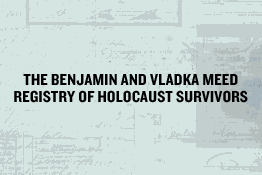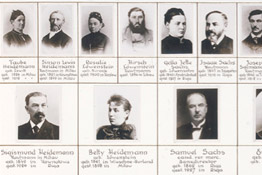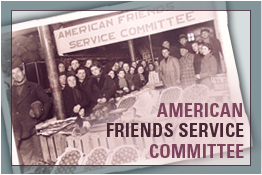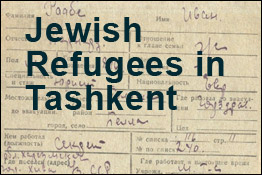Research Resources
How can I learn what happened to my family during the Holocaust?
There is no single list of victims and survivors of Holocaust-era persecution. Instead, researching family history around the Holocaust is a process of following trails and piecing together bits of information.
If possible, it is best if one knows the name of the town in which a particular individual resided prior to the war. The town name often provides the most fruitful entry point to the available resources by pointing to the proper archives for access to vital records. One can then refer to reference sources such as the Encyclopedia of the Holocaust, the Encyclopaedia Judaica, or The Encyclopedia of Jewish Life Before and During the Holocaust to get a general idea of the fate of the residents of that town.
Other valuable suggestions and concrete information can be found in Gary Mokotoff’s How to Document Victims and Locate Survivors of the Holocaust (Teaneck, NJ: Avotaynu, 1995; USHMM Library Call Number: Ref D804.3 .M65 1995). This excellent reference book can guide you through the process and includes the addresses, phone numbers, and fax numbers of organizations, libraries, archives and other facilities around the world with notable collections of Holocaust materials.
JewishGen, a Web site devoted to Jewish genealogy, also provides guidelines for beginning family history research. See their Frequently Asked Questions page for an extensive discussion of methods and resources.
Museum Resources for Family Research
The Museum has many resources that could assist you in researching the fate of individuals during the Holocaust. Many of these resources are only available onsite. The Holocaust Survivors and Victims Resource Center is located on the Museum’s second floor and is open 7 days a week. Resource Center staff is available to provide guidance and answer your questions.
You may wish to begin your search by checking the following resources:
Holocaust Survivors and Victims Database
The Holocaust Survivors and Victims Database centralizes information from the Museum's collections about individual survivors and victims of the Holocaust and Nazi persecution. The database includes millions of personal records from the Museum's extensive holdings that could assist in researching the fates of individuals during the Holocaust.
Search Database »
Survivors Registry
The mission of the Registry is to ensure that the individual experiences of survivors and victims of the Holocaust and Nazi-era persecution are collected, preserved and disseminated for future generations.
More »
International Tracing Service
The International Tracing Service and the Museum have prepared a searchable Inventory of the Archive of the International Tracing Service to provide Holocaust survivors, their families, and other researchers with an overview of the documentary materials contained in the International Tracing Service archive.
More »
Memorial Books (Yizkor Books)
Yizkor books chronicle the histories of Jewish communities destroyed during the Holocaust. These rare books are often among the few remaining sources on a town's people and institutions. They are an invaluable resource for scholars and family historians, providing personal glimpses into Jewish life before, during, and after the Holocaust.
Learn more »
Museum Collections
The Collections Division identifies, collects, and preserves the documentary, photographic, and artifactual record of the Holocaust; makes it available for research and display; and seeks to enhance the accessibility of this material.
More »
Genealogy
Explore a listing of Web resources representing a cross section of information related to the Holocaust. To ease searching, the online resources are grouped under topical headings and are annotated with brief descriptions.
More »
Maps
The Museum’s Mapping Initiatives use tools such as Google Earth and animated maps to enable citizens to understand Holocaust history and to bear witness to current threats of genocide across the globe.
More »
American Friends Service Committee
Search the Guide to Names from the American Friends Service Committee Collection and find copies of the original documents.
More »
Jewish Refugees in Tashkent
This database of Jewish evacuees and refugees in Tashkent, Uzbekistan, is the first attempt to draw together archival information concerning the fate of Jews in Central Asia during WWII. Based on the card catalogue of evacuees stored in the Central State Archives of the Republic of Uzbekistan, the list consists of more than 250,000 cards with approximately 339,250 evacuees.
More »
Because of the complexity of family histories and genealogical searches, the Resource Center’s staff members are unable to perform for you the substantive research required to construct your family history. However, the staff does provide reference services and can assist you in identifying relevant sources in the Museum and can direct you to other institutions outside the Museum that might provide additional information.



























